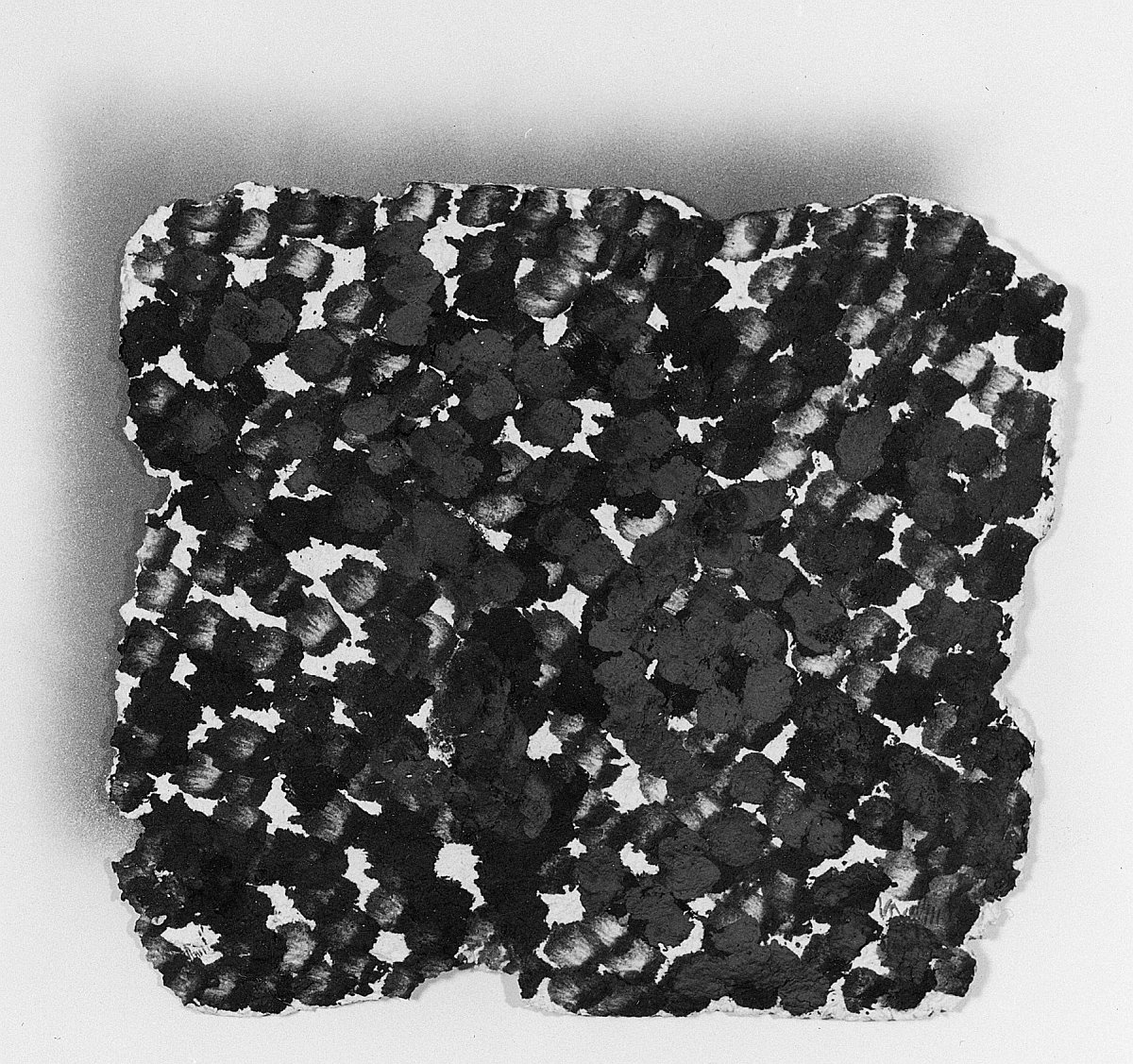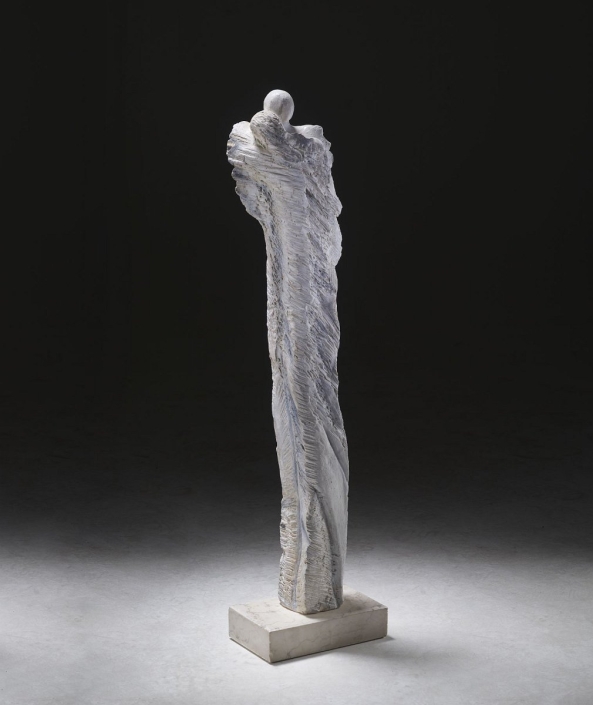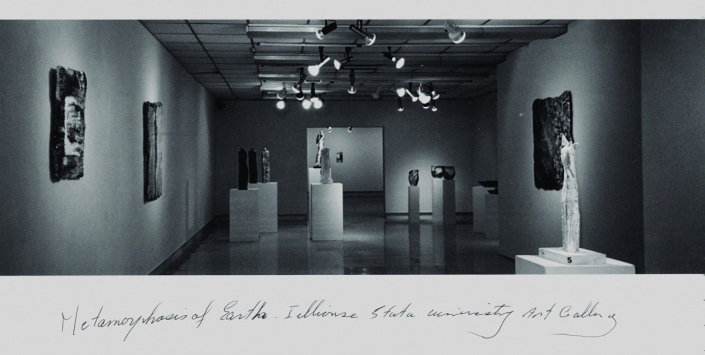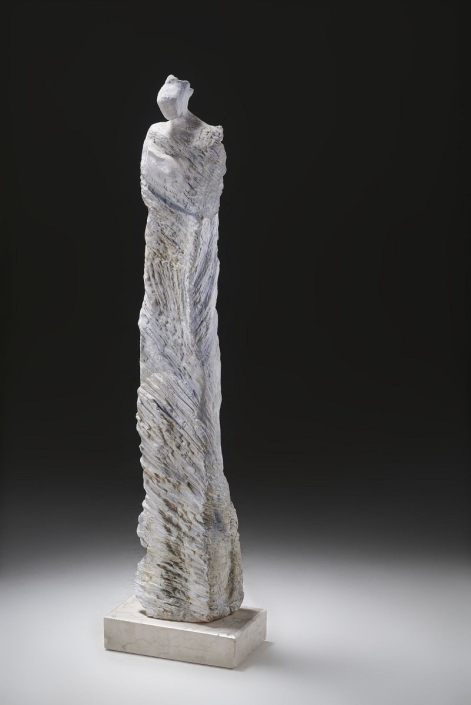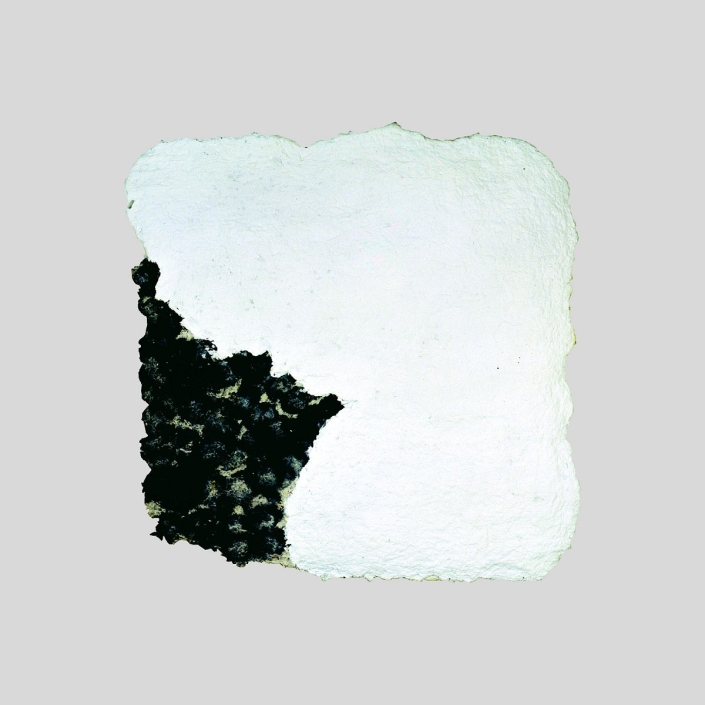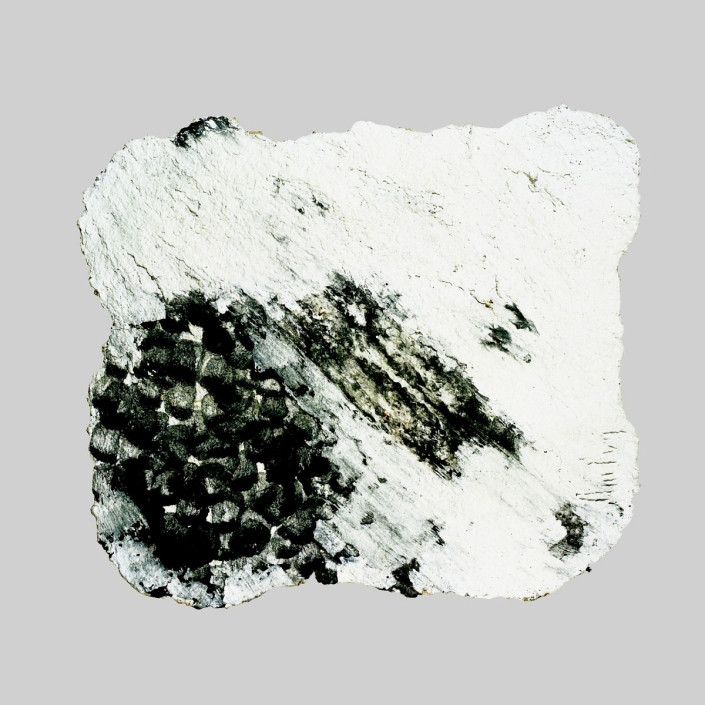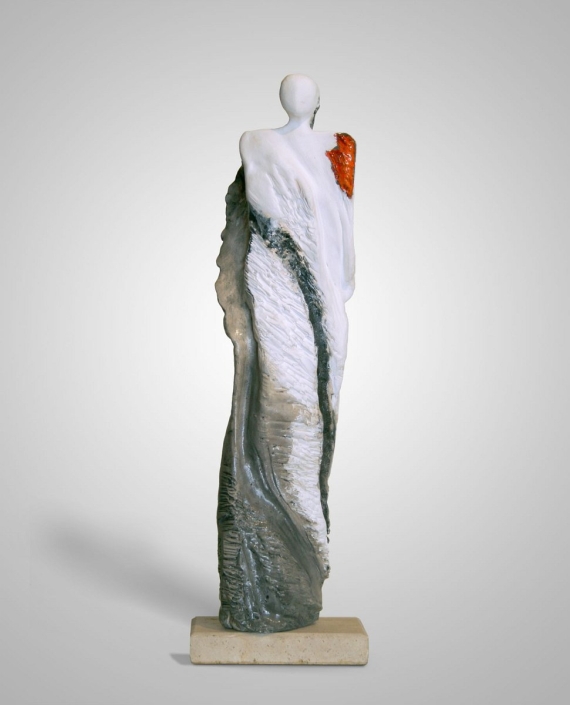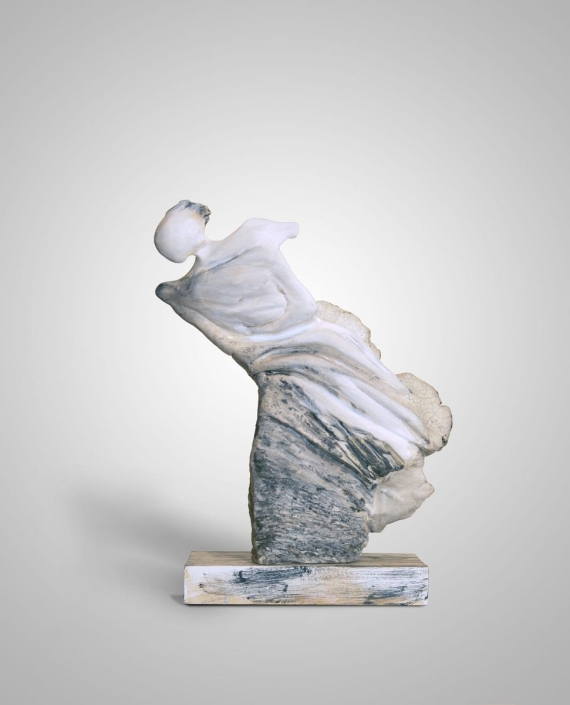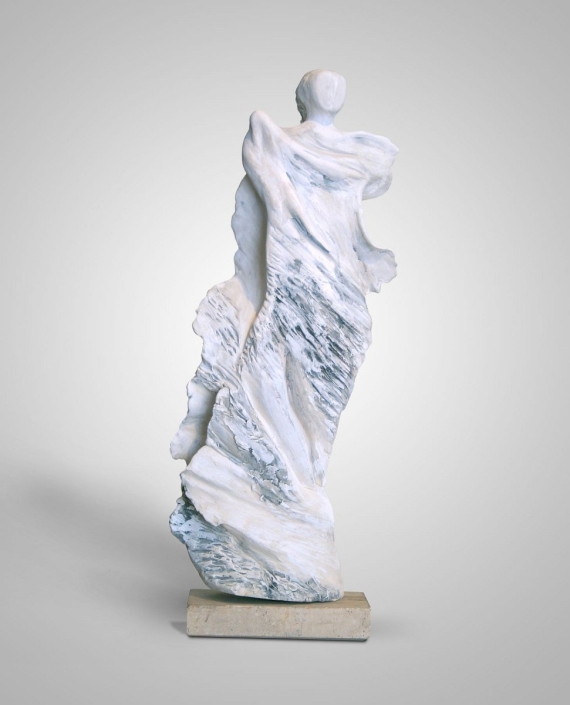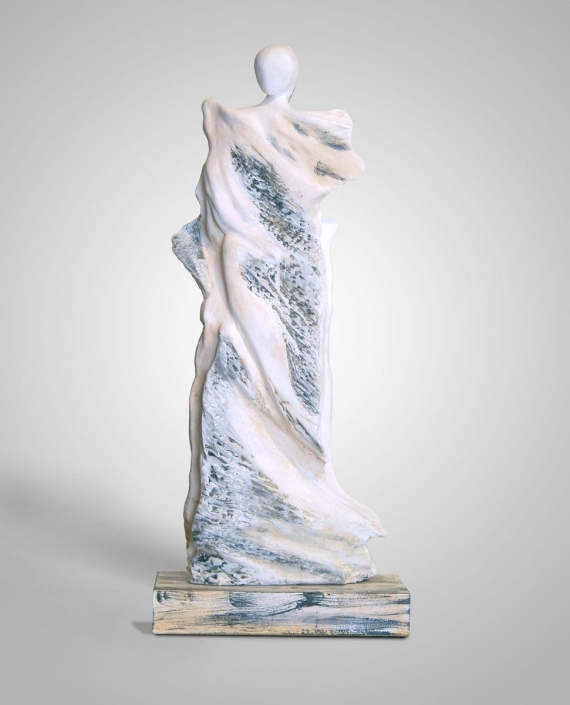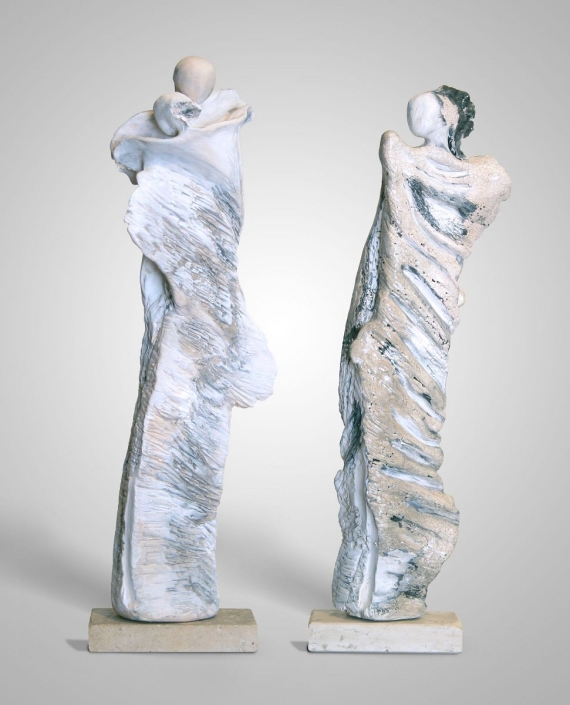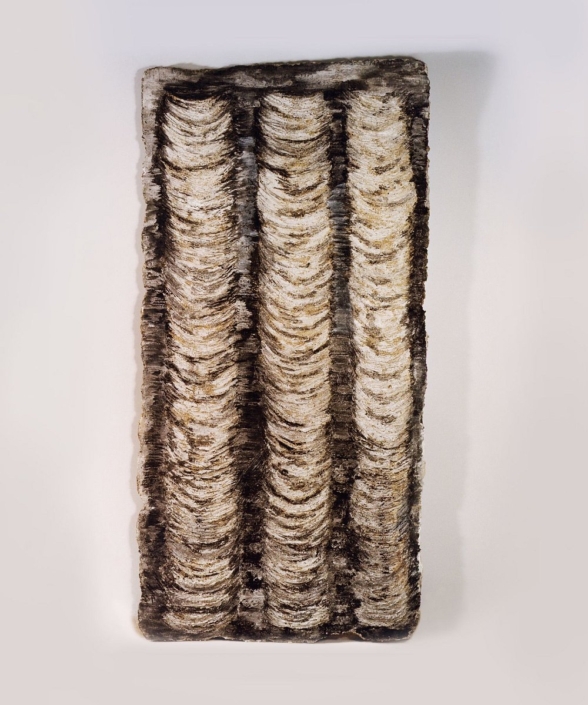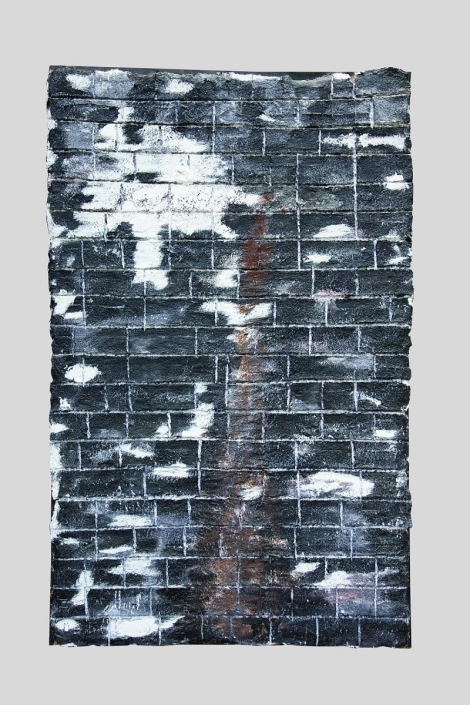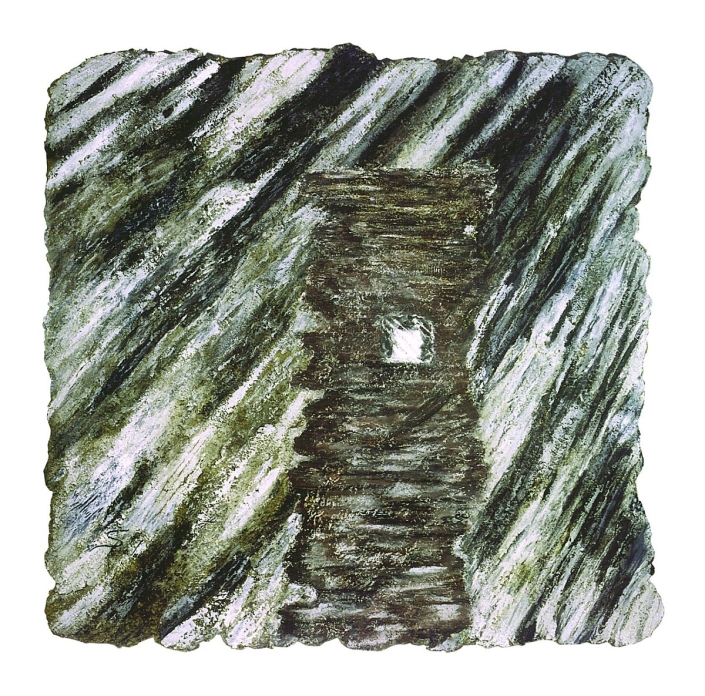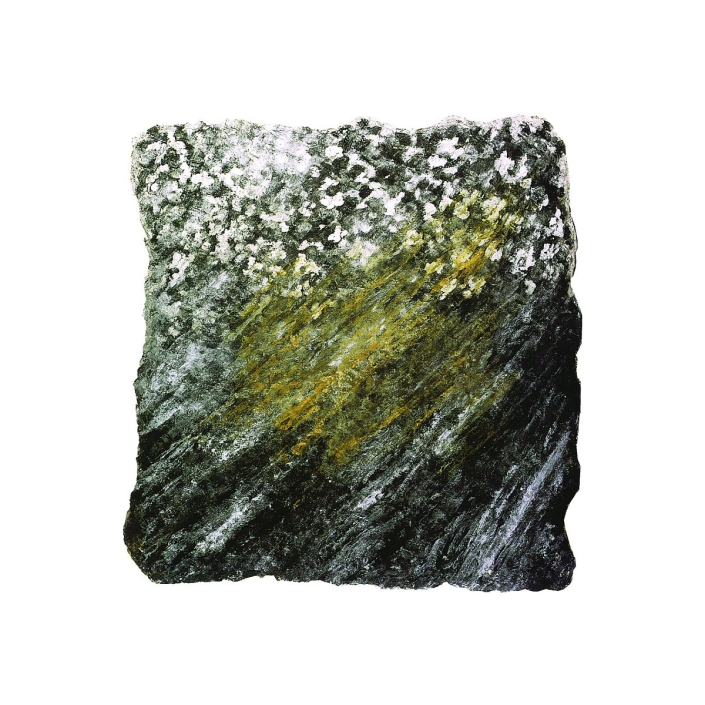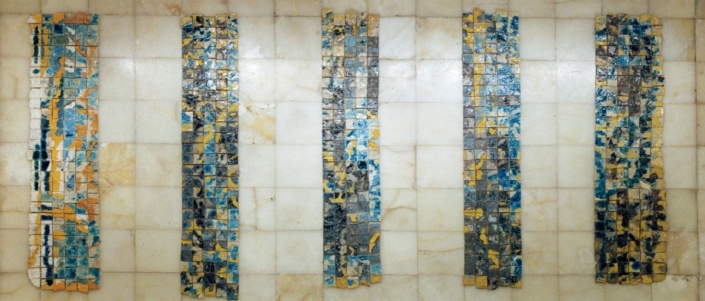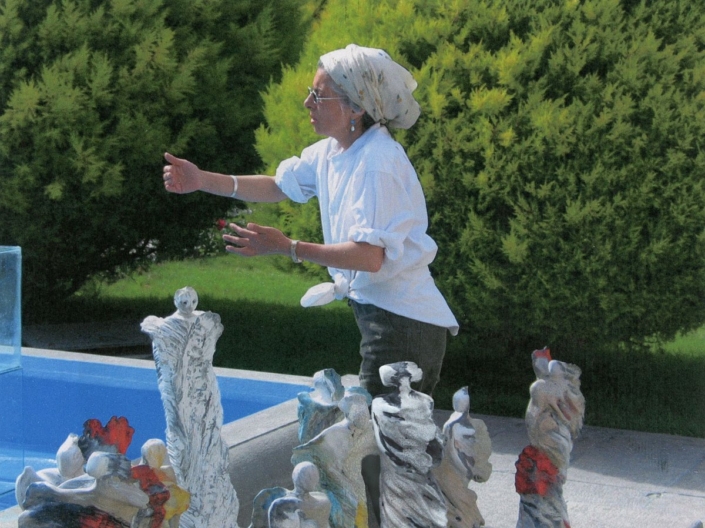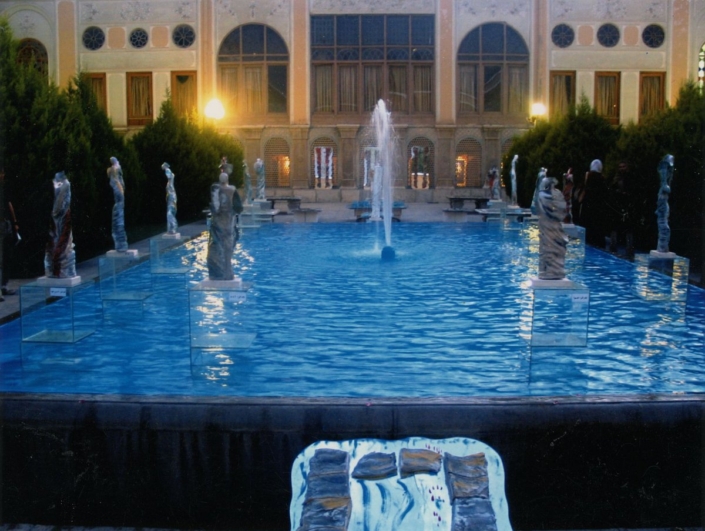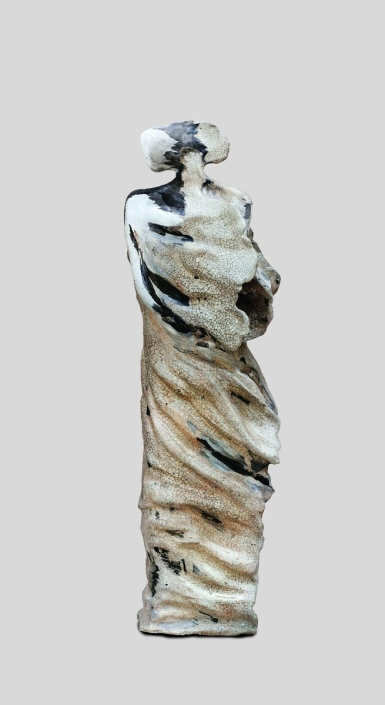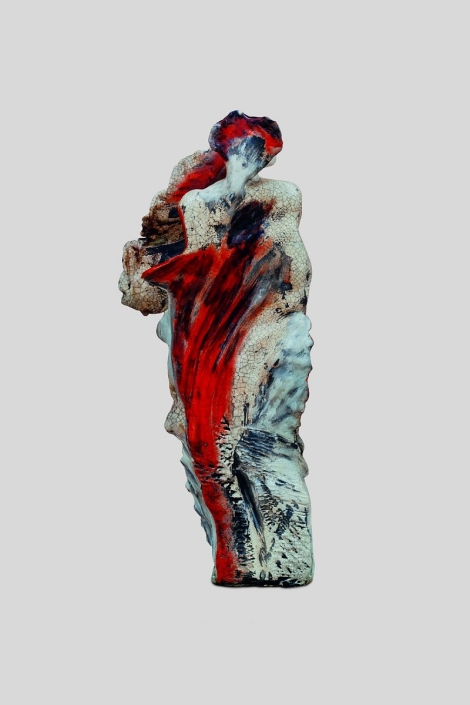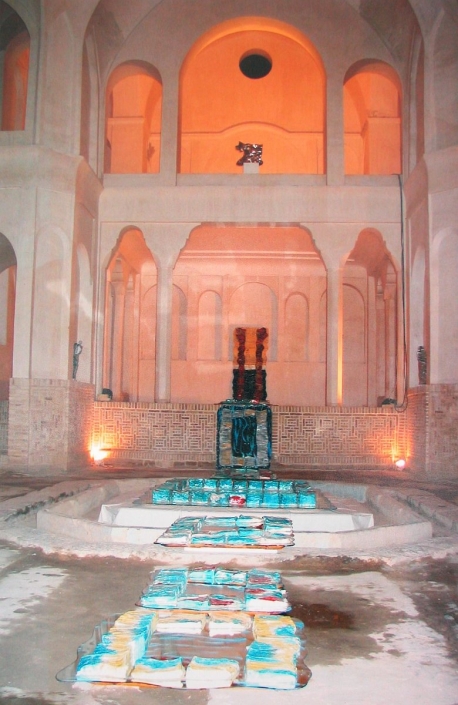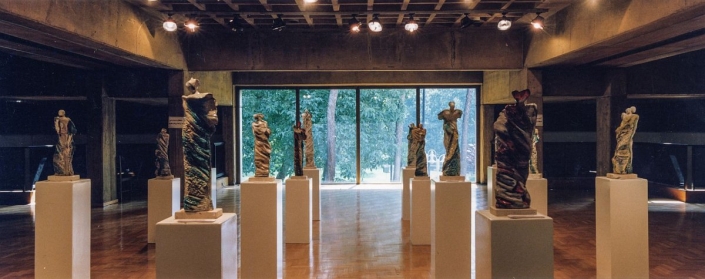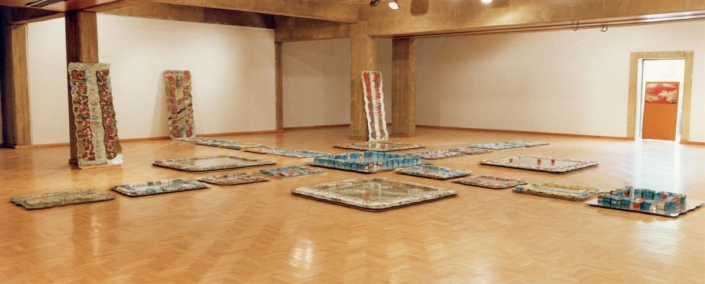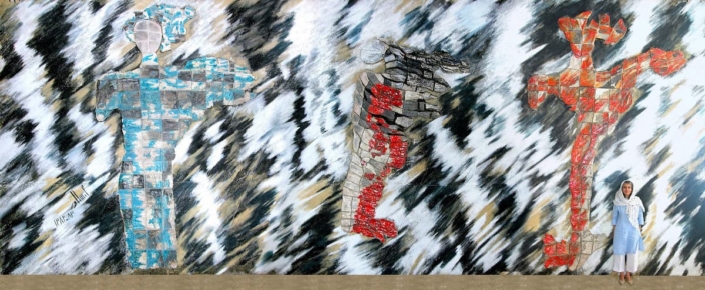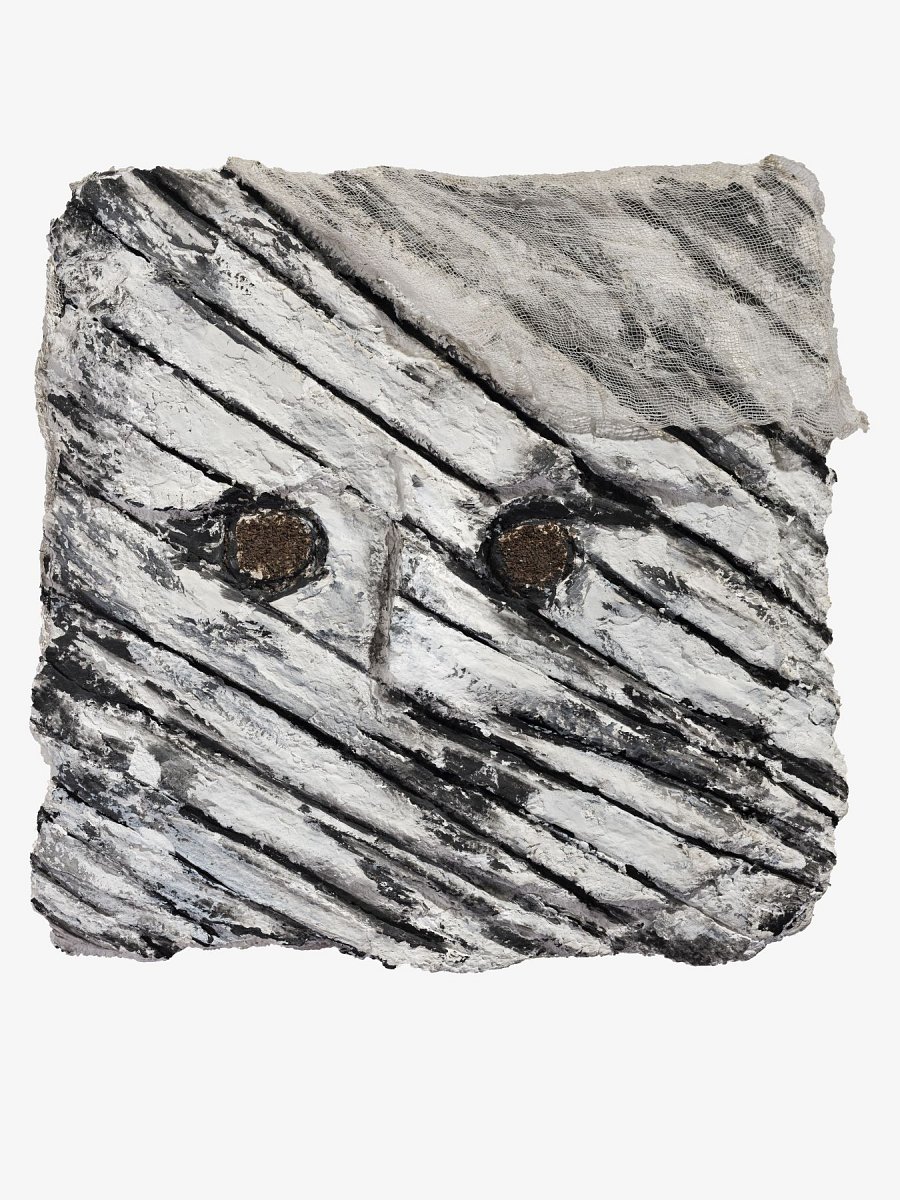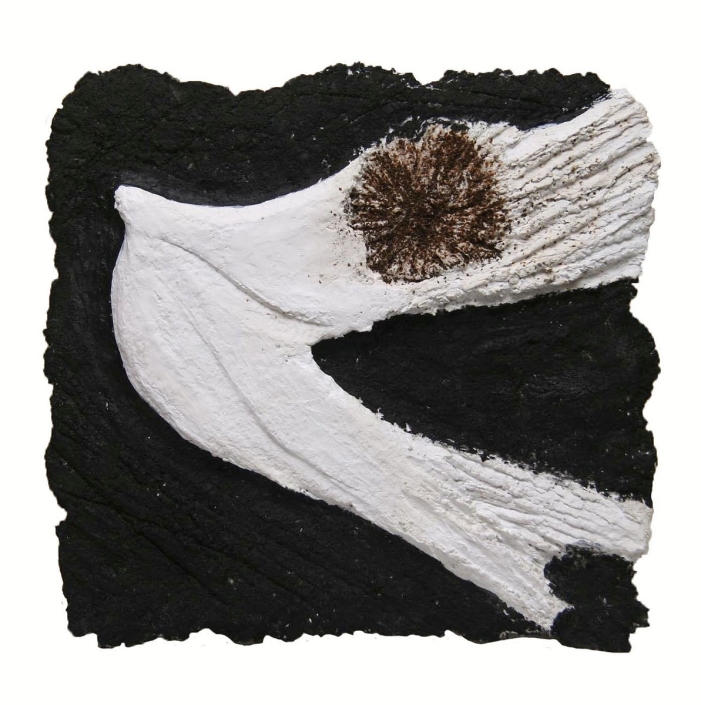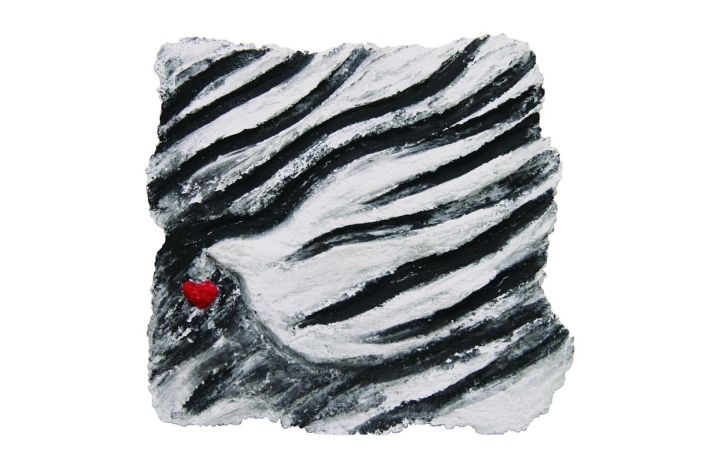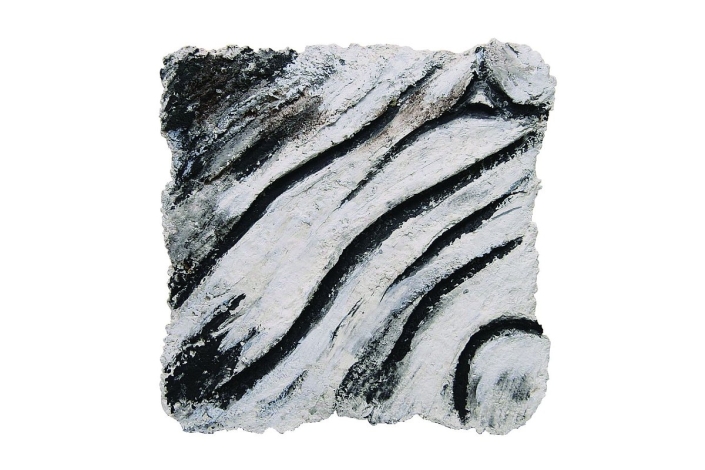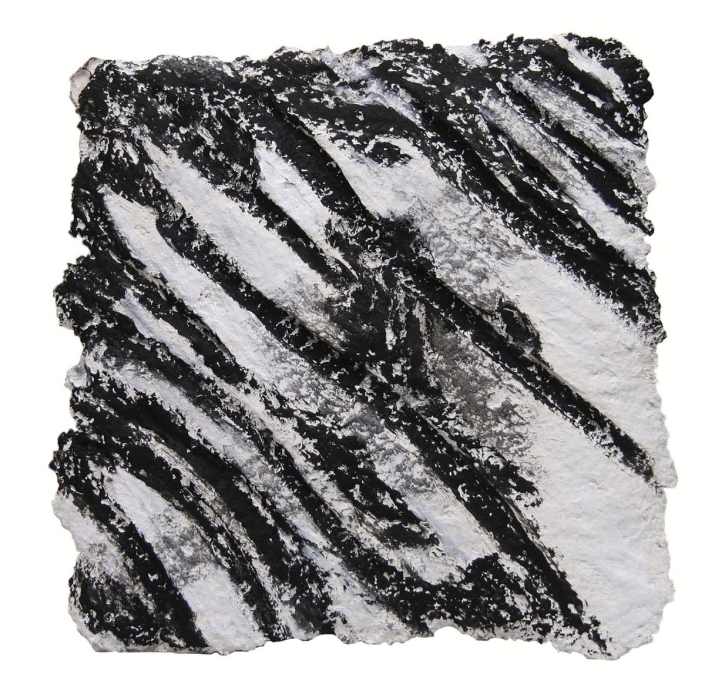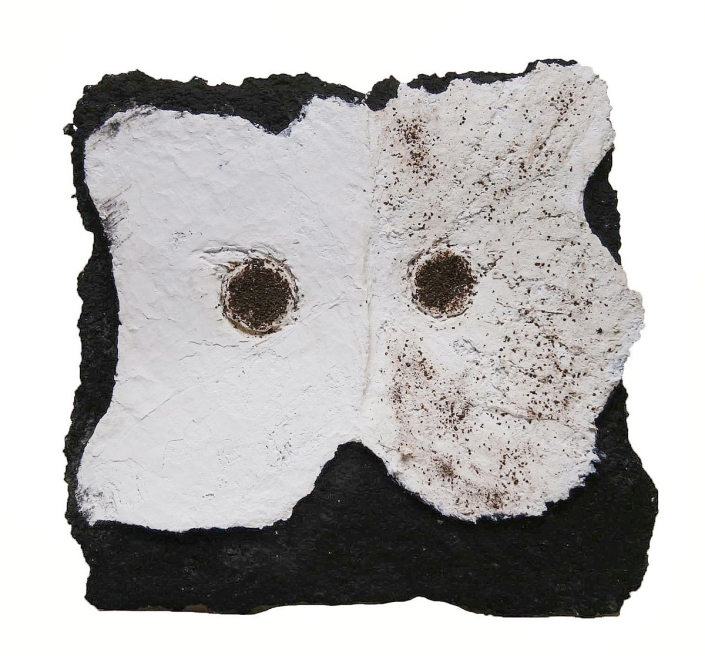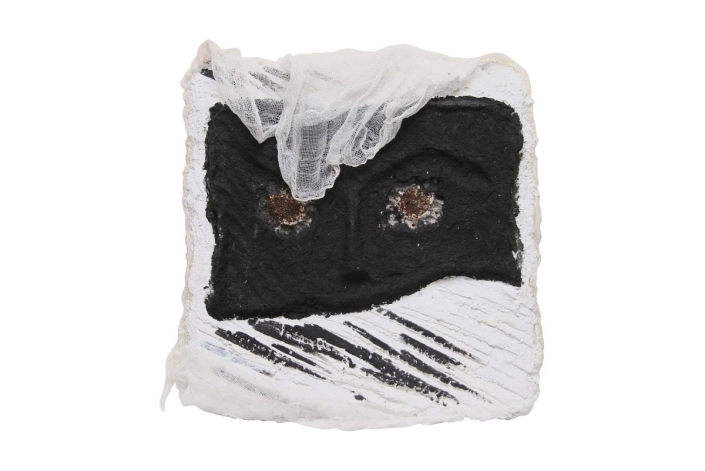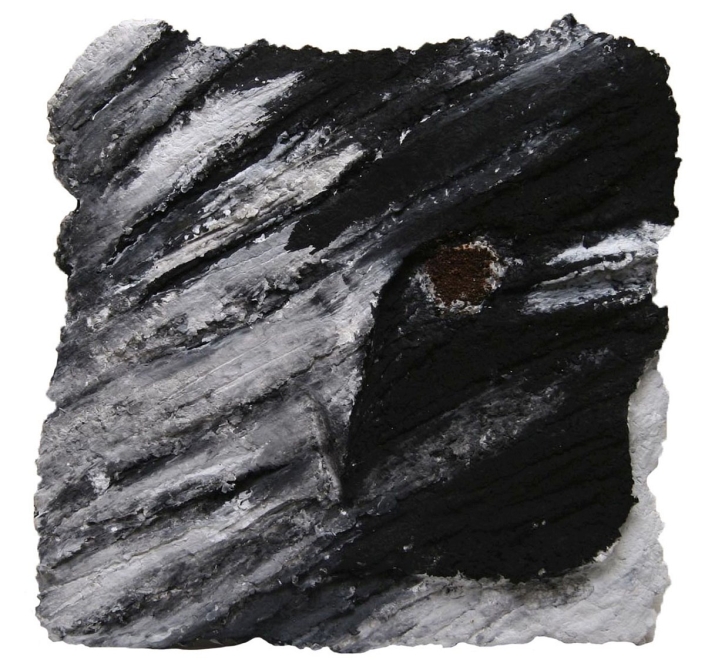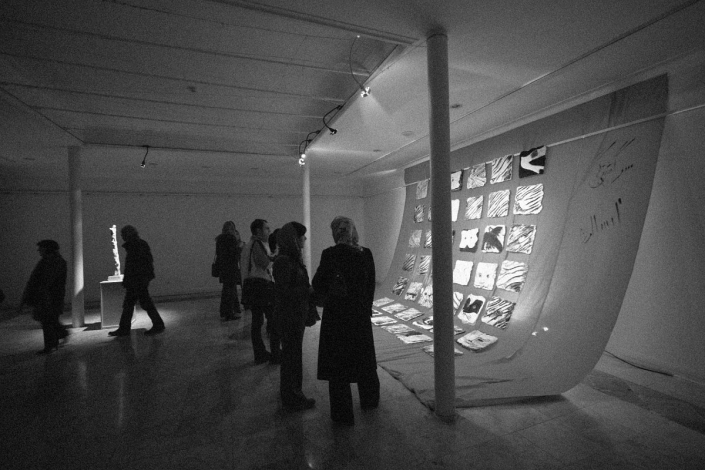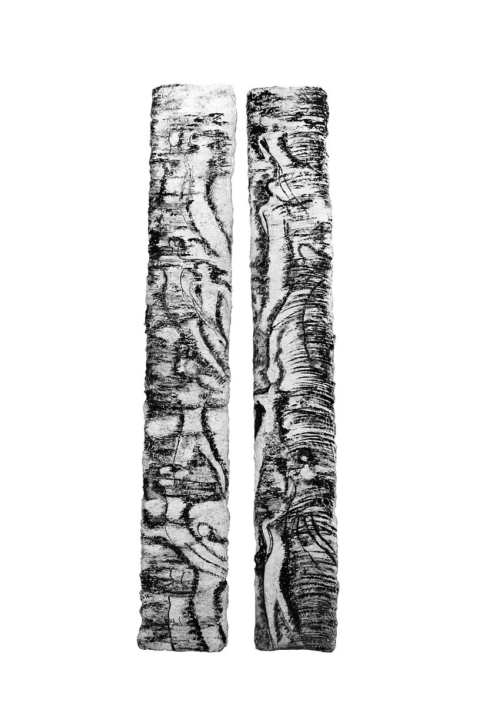Observung the Earth
Fairy | Metal Oxides,Black Ink | 40 x 47 cm | 2000
Airborne Angels
“Order shines from within and not from without.” This saying by Georges Rouault finds its fullest manifestation in the latest sculptures of Maryam Salour.
Different from those of many contemporary artists who seem to be after easy and quick success, works of Maryam Salour tell us of a more liberating and more mysterious effort to seek out the spirit in matter, the concept in the composition, and the invisible harmony in connectivity. These are the works of an artist preoccupied with a meditative solitude for the sole purpose of reaching peace within her.
In these sculptures there is a rhythmic balance between the unbearable weight of matter and the creative imagination of the artist. Like a breeze under the wings of her “bird-angels,” an invisible ebb and flow appears to have been there for all eternity. By the fragile movement of their arms, these angels let the mystery of existence unfold. In them, there is a need for something or somewhere else. What remains is to see the infinite shades of sensibility in the domain of form and matter. The art of sculpture here is to bring the eyes of the viewer to rest within the earth-heaven duality, accentuated by a thirst for freedom summoned with every airborne angel.
In the poetic works of Maryam Salour everything seems to be a function of the ethereal movement of creation, which is itself borne by long periods of contemplation and culminates in realizing itself in the infinite sense of beauty honored. Honored beauty, but also transfigured beauty, novel beauty. In the full sense of the word: Beauty directed towards the future whose roots are in the mystic origins of the earth-mother. In the sculptures of Maryam Salour, presence itself is the image of fecundity and at the same time the element of creative movement.
What I call the “trail of angels” is that which brings shivers to the viewer, shaken by an invisible force, a torrent redirected in the hands of the artist, who awakens in each of us the need for upright freedom and composure. In this way, Maryam Salour destroys human immanence by formal transcendence or transdescendance. It is our view of the world that she intends to change by these magnificent flying angels. Without analysis or redundancy, her art and her original style reveals invisible figures of the past and the future.
The art of Maryam Salour is not a prolific affirmation of the immediate or a simple eruption of the imagination in the domain of actuality. It is not an easy view of our present; it is a feast given to an image of origin resting buried in our indefinite historical memory, a little in the manner that Maryam Salour gives birth to her eternal angels.
Ramin Jahanbegloo
Philosopher
1994
Metamorphosis of Earth
Maryam Salour is a polyvalent artist. At once a ceramist, a sculptor and a painter, she incarnates the three disciplines without confusing them. There is nevertheless a connection between the three. Whether she innovates in the technique of ceramics by obtaining a blend of unusual colors, or in sculpture she projects delicate forms arising out of contradictory forces, or in painting she imitates the ruggedness of the mineral nature to create what she personally describes as “the four cornered dream,” we witness the multiple metamorphoses of the earth itself. The earth manifests itself at times as the turquoise blue of the skies of Persia; at other times it embraces the ethereal shape of the bird woman; or again becomes the rough surface of panels when the artist, in a dream-like fashion, turns her attention to stones in order to unveil the essence of those towering mountain ranges overhanging the oases of the Iranian plateau.
It was in France at the Savigny Academy that she was initiated to the art of ceramics. But from her early apprenticeship she reveals her hidden nostalgia for her country of birth. All the images of her primordial childhood: the snow-capped summits of the high mountains, the murmurs of the little cascades flowing into limpid basins, the blue domes which rival with the azure of the sky, already impregnate her inner vision of art. And that is why Mme de Savigny tells her one day: “Maryam, whatever you do, you shall remain the girl who belongs to the country of the blue domes.”
In her sculptures, this tendency to arrive at perfection manifests itself. The predominant form becomes the complementarity of opposite forces, the dual nature of Angel-Satan, of the androgyne. As an example, in her sculpture entitled “Day and Night” two slender and ecstatic bodies entwine like two entangled branches shooting out of a common trunk whose roots bore deeply in the abyss of the earth. Or that woman who springs weightless, in a trance, to the heights where she can lose herself in the stardust, as if the artist wanted to sublimate matter through the alchemy of her vision.
All the statuettes have triangular faces, as though by opposing the three angles, the triangle would constitute the restless dynamism of creation itself. That is why the omnipresence of the negating principle, or Satan, who projects a halo, so to speak, around the work of art, is rather like an occult power. Because the devil is not the fallen angel, nor is he damned, but on the contrary, he is the attracting force of love, he has been degraded from his privileged position due to this excessive love; it is his immoderation, the exclusivity of his irrepressible desire, his rebellion to all unconditional commands, which have been the cause of his damnation. He is the force which animates the universe, which gives warmth to the cold stars of the constellations. In Maryam Salour’s opinion, Satan and Angel have interchangeable roles. Like, for example, in the figure of that Angel-Satan adorned with fanshaped wings springing out of its body like some incomplete growth, like some draft apt to assume the dual nature of future incarnations.
The transition from sculpture to painting takes palace without shock or break, because even her paintings are painting-sculptures. They occasionally assume the appearance of a large and ancient rock, which bars the road, yet invites the viewer to go beyond. We find that same desire for dizzy heights as in the sculptures. A desire for rarefied space in the heights. Just as Maryam Salour innovated in the art of ceramics, here too she creates new cocktails, unusual mixture made up of papier mâché, crushed wood, colorful pigments. Mixtures which give the surface of her thick canvasses roughness, windings, and stripes which plough this mineral world. It is like being confronted with a dream turned into stone of geological sedimentations, as though by concentrating her vision, she goes up to the origin of chthonian forces prior to the multiform explosion of life which modified and enriched the natural scene of evolution.
To end, I might add that in the work of this original artist, one can study all the geological layers of the earth’s memory, layers describing, stage by stage, the palimpsest of the historical legend of the reign of minerals and reaching its apotheosis in that frail figure of the bird women before us like a “misunderstood sphinx,” and who tells us with the poet (Beudelaire): “I am beautiful, ye mortals, like a dream of stone.”
Dariush Shayegan
Philosopher
2000
Mithra | Marble | 70 x 35 x 10 cm | 1999
Tchahar Bagh, The Dream of a Lost Paradise
Preparation of Chahar Bagh,The Dream of a Lost Paradise Exhibition| Museum of Contemporary Art | Isfahan | 2003
The Imaginary Garden: Visions of the Infinite
The particularity of an artist is to create her own world. Beyond that, the value and the soundness of Maryam Salour’s art is in that it constitutes a particular universe. Hers is an autonomous small world that only fleetingly resembles that which we usually know, but which has all its depth, diversion and obscurity. In this respect Maryam Salour’s example remains rare in contemporary Iranian sculpture. For her, it is no longer sufficient to place herself only at the mere level of aesthetic sentiment, but to step entirely into a new world through which we can directly witness the mysteries of Personality.
This is above all the image of the Persian Garden. This expression of lost paradise haunts the mind of Maryam Salour. For her, the everlasting soul of Iran is incarnated in this mystical space where the invisible becomes substance and stone. Here the artist’s work resembles that of the philosopher who, by brewing a multitude of facts, arrives at the concept, at the abstract pleasure of an immeasurable definition, the materialization of which is the subjective proof of happiness, and the objective figure of the perpetual beauty.
It is here where the art of Maryam Salour meets the heritage of Persia, as a privileged place for the advent of memory, to establish her own “home.” Hence, the sentiment of metamorphosis that we feel in front of this resurrection of consciousness in the shape of the Persian Garden, and more directly before this dialogue between Maryam Salour’s style and the fertile earth. A communication that is not random but the very life of an art that discovers immortality.
Considering it as a whole, the art of Maryam Salour appears to us like a poetic act, which begs us to ask about the inner beauty of its elements. It makes us feel life, opens our eyes, and makes us realize that sculpture is quite distinct from an artful imitation of an exterior reality. That is where the artist asserts herself deeply and naturally as a creator.Set against a world where there exists nothing more than the power of decadence, the art of Maryam Salour appeals to a different form of vision. She sees the world as she shows it. To see, for her, is to invite us to see. So, a wave passes and, from one side of the mirror to the other, we are born into the world.
The Persian Garden invites us to contemplate, to recognize our perennial profundity. To Maryam Salour, the call to memory unites by a mystical communion with the invisible eternity of the Persian soul.
Ramin Jahanbegloo
Philosopher
Teheran 10 Avril 2003
سرگشتگی
سرگشتگی | خمیر کاغذ، اکسیدهای فلزی، مرکب سیاه | ١٣۸۴
هنر ما را قادر میسازد خودمان را پیدا کنیم
و در همان زمان از دست بدهیم.
توماس مرتون


